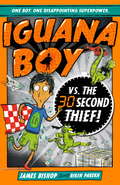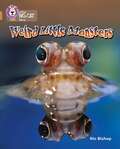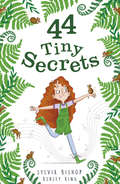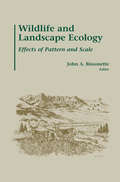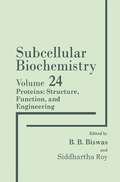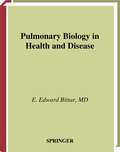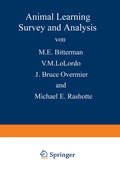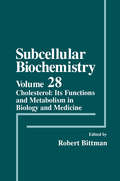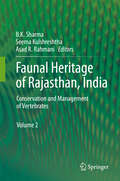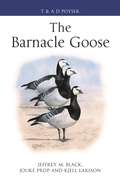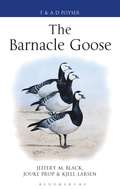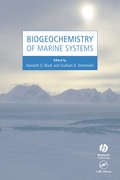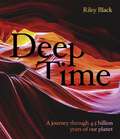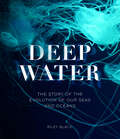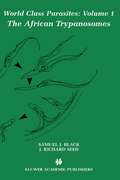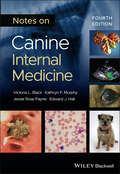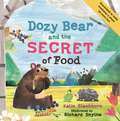- Table View
- List View
Iguana Boy vs. The 30 Second Thief: Book 2 (Iguana Boy)
by James BishopOne boy. One disappointing superpower. Can Dylan and his bunch of hyper iguanas make a lasting impression on the superhero collective, run by Ron Strongman, or will he be laughed out of town?He might have the lamest superpower ever but Dylan, AKA Iguana Boy, has proven himself worthy enough to be accepted into the superhero collective. Dylan is excited and his iguanas are hyper. Recipe for success, RIGHT?Iguana Boy and his team of iguanas eagerly await their orders to SAVE THE WORLD. But CEO of the Superhero Collective Ron Strongman doesn't have time for lowly superheroes. Dylan will have to find his own way to get to the top, or else he will be saving silly cats from trees FOREVER. When a new villain is causing chaos across London, Dylan can't believe his luck... this is his chance. Can Iguana Boy bring Repeat Offender to justice ... In 30 seconds or less!
I like Bees, I don't like Honey!
by Sam BishopI like bees . . . but I don't like honey!I like my imaginary friend . . . but I don't like it when people say he's not real. A beautifully illustrated, funny and thought-provoking book for building confidence and encouraging children to express their feelings - about anything and everything. This book will help enable a much broader conversation about individuality, fear and hopes.All author royalties are being donated to the NSPCC.
44 Tiny Secrets (44 Tiny Secrets #1)
by Sylvia BishopThe first book in a heartwarming and timeless new series with a brave and spirited heroine, from the acclaimed duo behind THE BOOKSHOP GIRL. Betsy Bow-Linnet is determined to become a world famous concert pianist like her parents. There’s just one problem: no matter how hard she practises she doesn't share their musical talents. So when a mysterious letter arrives from a woman claiming to know of an unusual Method that will make Betsy’s playing ‘stupendous’, Betsy jumps at the chance. There's just one condition: she must keep the Method a secret. But it isn't just one secret – it's forty-four tiny secrets in the shape of a boxful of pygmy mice! Betsy is mystified – how are they going to help her play the piano and – more importantly – how on earth can she keep them all a secret? Gorgeously illustrated in two-colour, this is a warm, funny and pitch-perfect story about the true nature of family love and finding your real talents in the most unexpected of places. Perfect for fans of ISADORA MOON, AMELIA FANG, OTTOLINE and HARPER.
Wildlife and Landscape Ecology: Effects of Pattern and Scale
by John A. BissonetteWhile the research and management of wildlife has traditionally emphasised studies at smaller scales, it is now acknowledged that larger, landscape-level patterns strongly influence demographic processes in wild animal species. This book is the first to provide the conceptual basis for learning how larger scale patterns and processes can influence the biology and management of wildlife species. It is divided into three sections: Underlying Concepts, Landscape Metrics and Applications and Large Scale Management.
Plant Genetic Engineering (Subcellular Biochemistry #17)
by B. B. Biswas J. Robin HarrisEminent researchers provide broad coverage of plant molecular biology and genetic engineering, detailing technological advances in plant cell transformation and responses. This state-of-the-art text includes coverage of molecular action of plant growth hormone, signal transduction, light mediated expression of genes, and genetic engineering of crop plants and trees.
Proteins: Structure, Function, and Engineering (Subcellular Biochemistry #24)
by B. B. Biswas Siddhartha RoyHere, researchers review the latest breakthroughs in protein research. Their contributions explore emerging principles and techniques and survey important classes of proteins that will play key roles in the field's future. Articles examine the possibility of a Boltzman-like distribution in protein substructures, the new technique of Raman spectroscopy, and compact intermediate states of protein folding. This well-illustrated volume also features coverage of proteins that bind nucleic acids.
Pulmonary Biology in Health and Disease
by Edward E. BittarPulmonary Biology in Health and Disease was conceived as a companion to a handful of expensive, multivolume textbooks. This is part of the promising trend to publish shorter textbooks on the subjects of lung biology and remodeling. Whoever is familiar with human biology and the far-reaching consequences of the genome and postgenome revolutions is apt to concede that the centerpiece in remodeling lies in the ?eld of m- ecular cardiobiology. The ?eld of molecular cardiobiology includes the syndrome of chronic heart failure as well as ischemic cardioprotection. By analogy, the centerpiece in pulmonobiology is chronic asthma. Key topics in the present volume include s- naling mechanisms regulating the endothelium and smooth muscle cells,in?ammatory cells, mediators, airway surface liquid, and pharmacological therapy that focuses on how in?amed airways are altered. Written primarily for predoctoral and postdoctoral graduates in the basic medical sciences, the medical student and postdoctoral physician, graduates in the allied s- ences, nurses, pulmonologists, and physicians in critical care medicine, this book p- vides many of the fundamentals of contemporary pulmonology. It is divided into several parts devoted to the control of respiration, arterial chemoreceptors,muscles of ventilation, pulmonary physiology, and gas exchange in health, exercise, and disease. Special emphasis is placed on emphysema and its pathobiology, acute lung injury, asthma and inhaled toxicants. Because the ?eld is always evolving, each chapter includes recommended readings that lead the reader to sources of additional information, such as the review on remodeling of the blood gas barrier by West and Mathieu-Costello.
Animal Learning: Survey and Analysis (Nato Science Series A: #19)
by M. E. Bitterman V. M. LoLordo J. Bruce Overmier Michael E. RashotteFor ten days, a number of neuroscientists met at Reisensburg to attend a series of lectures and discussions, an Institute, on animal learning. The students were drawn from a wide variety of disciplines, including anatomy, biochemistry, pharmacology, physiol ogy and zoology. It is probably true to say that many of them had at best a sketchy knowledge about the learning behavior of animals, about the conditions which are necessary for learning to take place and about the theories that psychologists have constructed about the learning processes. Was the Institute of any benefit to those neuro scientists whose interests lay in studying the functioning of the nervous system by manipulating it or probing it in some direct way? Some twenty years ago the answer to this question would probably have been "No"; and there is a very good reason why this view might have been held, especially by students of the mammalian nervous system. At that time most investigators used anaesthetised animals, or animals immobilized in some other way such as by surgically isolating the brain from the spinal cord, by dividing the brain at various levels or through the use of paralyzing agents. These con ditions achieved two things. On the one hand, they allowed sub stantial advances to be made, particularly in the analysis of sensory processing and in the analysis of the neuronal mechanisms of relatively simple reflex action. On the other hand, the experi mental conditions virtually eliminated complex behavior.
Cholesterol: Its Functions and Metabolism in Biology and Medicine (Subcellular Biochemistry #28)
by Robert BittmanExperts investigate the biochemical and biomedical aspects of cholesterol, addressing its metabolism in normal and disease states. They discuss a broad range of topics, including key steps in the cholesterol biosynthetic pathway, and the role of cholesterol in cancer, atherosclerosis, and diseases of the nervous system. The book's comprehensive coverage also includes the pathological consequences and potential therapies for various disease states, and the development of new anti-atherogenic drugs.
Photobiology: The Science of Light and Life
by Lars Olof BjöPhotobiology - the science of light and life - begins with basic principles and the physics of light and continues with general photobiological research methods, such as generation of light, measurement of light, and action spectroscopy. In an interdisciplinary way, it then treats how organisms tune their pigments and structures to the wavelength components of light, and how light is registered by organisms. Then follow various examples of photobiological phenomena: the design of the compound eye in relation to the properties of light, phototoxicity, photobiology of the human skin and of vitamin D, photomorphogenesis, photoperiodism, the setting of the biological clock by light, and bioluminescence. A final chapter is devoted to teaching experiments and demonstrations in photobiology.This book encompasses topics from a diverse array of traditional disciplines: physics, biochemistry, medicine, zoology, botany, microbiology, etc., and makes different aspects of photobiology accessible to experts in all these areas as well as to the novice.
Faunal Heritage of Rajasthan, India: Conservation and Management of Vertebrates
by B.K. Sharma, Seema Kulshreshtha and Asad R RahmaniThis is the first ever monumental and scientific documentation of the faunal wealth of the Indian Desert state of Rajasthan. This volume, the second of two, provides a comprehensive picture of the conservation efforts undertaken to prevent further degradation of the condition of Rajasthan’s faunal wealth. A scholarly contribution to the field of knowledge, it provides novel and vital information on wildlife preservation initiatives in India’s largest state. Broadly falling under the Indo-Malaya Ecozone, the three major biomes of Rajasthan include deserts and xeric shrublands, tropical and subtropical dry broadleaf forests, and tropical and subtropical moist broadleaf forests. The corresponding ecoregions to the above biomes are, respectively, the Thar Desert and northwestern thorn scrub forests, the Khathiar-Gir dry deciduous forests, and the Upper Gangetic Plains moist deciduous forests. Contrary to popular belief, the well-known Thar or Great Indian Desert occupies only a part of the state. Rajasthan is diagonally divided by the Aravalli mountain ranges into arid and semi-arid regions. The latter have a spectacular variety of highly diversified and unique yet fragile ecosystems comprising lush green fields, marshes, grasslands, rocky patches and hilly terrains, dense forests, the southern plateau, fresh water wetlands, and salt lakes. Apart from the floral richness, there is faunal abundance from fishes to mammals. In this volume, the various flagship and threatened species are described in the 20 chapters penned by top notch wildlife experts and academics. The world famous heronry, tiger reserves, wildlife sanctuaries and some threat-ridden biodiversity-rich areas shall certainly draw the attention of readers from around the world.
The Bad Guys: Episode 3 & 4 (The Bad Guys Ser. #2)
by Aaron BlabeyThey sound like the Bad Guys, they look like the Bad Guys... and they even smell like the Bad Guys in this fully illustrated, laugh-out-loud adventure. Mr Wolf and his bad, bad buddies,Mr Piranha, Mr Snake and Mr Shark, have messed with the wrong guinea pig. And this nasty little furball wants revenge. But that's nothing compared to the ZOMBIE KITTEN APOCALYPSE! Should you panic? Should you cry? NO! Just sit back and watch the fur fly as the world's baddest good guys take on two new adventures.
Cellular and Molecular Biology of Neuronal Development
by Ira BlackA central problem in neurobiology concerns mechanisms that generate the pro found diversity and specificity of the nervous system. What is the substance of diversification and specificity at the molecular, cellular, and systems levels? 4 How, for example, do 1011 neurons each form approximately 10 interconnec tions, allowing normal physiological function? How does disruption of these processes result in human disease? These proceedings represent the efforts of molecular biologists, embryologists, neurobiologists, and clinicians to approach these issues. in this volume are grouped by subject to present the varieties The chapters of methods used to approach each individual area. Section I deals with embry ogenesis and morphogenesis of the nervous system. In Chapter 3, Weston and co-workers describe the use of monoclonal antibodies that recognize specific neuronal epitopes (including specific gangliosides) for the purpose of defining heterogeneity in the neural crest, an important model system. Immunocyto chemical analysis reveals the existence of distinct sUbpopulations within the crest at extremely early stages; cells express neuronal or glial binding patterns at the time of migration. Consequently, interactions with the environment may select for predetermined populations. Le Douarin reaches similar conclusions in Chapter 1 by analyzing migratory pathways and developmental potentials in crest of quail-
The Barnacle Goose
by Jeffrey M. Black Jouke Prop Kjell LarssonThe Barnacle Goose, a distinctive, handsome black-and-white bird, gets its name from a mediaeval myth that the birds hatched from barnacles – how else to explain their sudden appearance each autumn in northern Britain? We now know, of course, that the birds migrate from Arctic Russia, Norway and Svalbard to winter throughout northern Europe. This book represents a culmination of more than 25 years of Barnacle Goose research. It represents the story of one of Europe's most celebrated long-term behavioral studies, detailing the lives of these social and sociable birds. Chapters include sections on pair formation and bonding, family and population dynamics, brood parasitism, food and feeding, size and shape in different populations, life cycle, survivorship, dispersal, migration, and conservation, with particular regard to climate change. It is a rigorous and thorough examination of the lives of these birds, in fine Poyser tradition.
The Barnacle Goose
by Jeffrey M. Black Jouke Prop Kjell LarssonThe Barnacle Goose, a distinctive, handsome black-and-white bird, gets its name from a mediaeval myth that the birds hatched from barnacles – how else to explain their sudden appearance each autumn in northern Britain? We now know, of course, that the birds migrate from Arctic Russia, Norway and Svalbard to winter throughout northern Europe. This book represents a culmination of more than 25 years of Barnacle Goose research. It represents the story of one of Europe's most celebrated long-term behavioral studies, detailing the lives of these social and sociable birds. Chapters include sections on pair formation and bonding, family and population dynamics, brood parasitism, food and feeding, size and shape in different populations, life cycle, survivorship, dispersal, migration, and conservation, with particular regard to climate change. It is a rigorous and thorough examination of the lives of these birds, in fine Poyser tradition.
Biogeochemistry of Marine Systems (Biological Sciences Series)
by Kenneth D. Black Graham B. ShimmieldMarine systems vary in their sensitivities to perturbation. Perturbation may be insidious – such as increasing eutrophication of coastal areas – or it may be dramatic – such as a response to an oil spillage or some other accident. Climate change may occur incrementally or it may be abrupt, and ecosystem resilience is likely to be a complex function of the interactions of those assemblages or species mediating key biogeochemical processes. Biogeochemistry of Marine Systems considers issues of marine system resilience, focusing on a range of marine systems that exemplify major global province types but are also interesting and topical in their own right, on account of their sensitivity to natural or anthropogenic change or their importance as ecological service providers. Authors concentrate on advances of the last decade.
Colton P.i. Protector: Colton P. I. Protector The Texas Soldier's Son The Fugitive's Secret Child Snowbound Security (The Coltons of Red Ridge #5)
by Regan BlackHe’s claiming redemption And the woman he wants!
Deep Time: A journey through 4.5 billion years of our planet
by Riley BlackDeep time is the timescale of the geological events that have shaped our planet. Whilst so immense as to challenge human understanding, its evidence is nonetheless visible all around us. Through explanations of the latest research and over 200 fascinating images, Deep Time explores this evidence, from the visible layers in ancient rock to the hiss of static on the radio, and from fossilized shark's teeth to underwater forests. These relics of ancient epochs, many of which we can see and touch today, connect our present to the distant past and answer broader questions about our place in the timeline of the Earth.Charting 4.5 billion years of geological history, this is the story of our world, from its birth to the dawn of civilization.
Deep Water: The Story of the Evolution of Our Seas and Oceans
by Riley BlackWhat lies beneath the surface of the ocean has mystified humankind for millennia.We have explored more of the surface of the Moon than we have of the deep sea. From vampire squid to giant spider crabs, and from hydrothermal vents to bioluminescence, its watery depths are both fascinating and terrifying.Deep Water explores, through spectacular images and expert text, how this unique habitat came into being, what lives there and why, how it has evolved and what the future will bring for this dark and mysterious environment.
The Last Days of the Dinosaurs: An Asteroid, Extinction and the Beginning of Our World
by Riley BlackSome 66 million years ago, an asteroid some seven miles across slammed into the Earth, leaving a geologic wound over 50 miles in diameter. In the terrible mass extinction that followed, more than half of known species vanish seemingly overnight. But this worst single day in the history of life of Earth was as critical for us as it was for the dinosaurs, as it allowed for evolutionary opportunities that were closed for the previous 100 million years. In The Last Days of the Dinosaurs, Riley Black walks readers through what happened in the days, the years, the centuries and the million years after the impact. Life’s losses were sharp and deeply felt, but the hope carried by the beings that survived sets the stage for the world as we know it now.
The African Trypanosomes (World Class Parasites #1)
by Samuel J. Black J. Richard SeedAfrican trypanosomes are tsetse-transmitted protozoa that inhabit the extracellular compartment of host blood. They cause fatal sleeping sickness in people, and Nagana, a wasting and generally fatal disease, in cattle. While trypanosomes are most common to Africa (about 30% of Africa's cattle graze on the fringe of the tsetse habitat), some species have spread beyond its boarders to Asia, the Middle East and South America. The African Trypanosomes, volume one of World Class Parasites, is written for researchers, students and scholars who enjoy reading research that has a major impact on human health, or agricultural productivity, and against which we have no satisfactory defense. It is intended to supplement more formal texts that cover taxonomy, life cycles, morphology, vector distribution, symptoms and treatment. It integrates vector, pathogen and host biology and celebrates the diversity of approach that comprises modern parasitological research.
Notes on Canine Internal Medicine
by Victoria L. Black Kathryn F. Murphy Jessie Rose Payne Edward J HallCanine Internal Medicine A thorough yet concise guide to diagnosing and managing canine medical conditions The newly revised Fourth Edition of Notes on Canine Internal Medicine delivers a comprehensive guide to the diagnosis of common and uncommon medical conditions in dogs. Written to act as a practical and fast-access subject reference for veterinary practitioners and students, Notes on Canine Internal Medicine encourages physicians to take a logical and evidence-based approach to canine medicine. Divided into five sections, the first four are dedicated to clinical presentations, physical and laboratory abnormalities, and – new to this edition – imaging patterns. It concludes with a section on the organ systems of canines, providing a robust summary of how to diagnose and manage common specific conditions of each system. This new edition includes: A thorough introduction to the clinical presentations of a variety of presenting complaints, with both common and uncommon causes of each complaint and a logical diagnostic approach In-depth examinations of common and uncommon physical problems, with a complete diagnostic approach including lab results and key imaging findings that aid in diagnosis Comprehensive explorations of laboratory abnormalities in haematology, serum biochemistry, and urinalysis Practical discussions of diagnostic imaging patterns, including plain radiographic, ultrasonographic, contrast radiographic, and cross-sectional imaging Notes on Canine Internal Medicine Fourth Edition is designed to be a useful resource for all veterinary clinicians; as a handy point of reference for veterinary students, recently graduated veterinary surgeons and those returning to work after career breaks, but also for experienced veterinary surgeons dealing with particularly difficult or challenging cases.
Notes on Canine Internal Medicine
by Victoria L. Black Kathryn F. Murphy Jessie Rose Payne Edward J. HallCanine Internal Medicine A thorough yet concise guide to diagnosing and managing canine medical conditions The newly revised Fourth Edition of Notes on Canine Internal Medicine delivers a comprehensive guide to the diagnosis of common and uncommon medical conditions in dogs. Written to act as a practical and fast-access subject reference for veterinary practitioners and students, Notes on Canine Internal Medicine encourages physicians to take a logical and evidence-based approach to canine medicine. Divided into five sections, the first four are dedicated to clinical presentations, physical and laboratory abnormalities, and – new to this edition – imaging patterns. It concludes with a section on the organ systems of canines, providing a robust summary of how to diagnose and manage common specific conditions of each system. This new edition includes: A thorough introduction to the clinical presentations of a variety of presenting complaints, with both common and uncommon causes of each complaint and a logical diagnostic approach In-depth examinations of common and uncommon physical problems, with a complete diagnostic approach including lab results and key imaging findings that aid in diagnosis Comprehensive explorations of laboratory abnormalities in haematology, serum biochemistry, and urinalysis Practical discussions of diagnostic imaging patterns, including plain radiographic, ultrasonographic, contrast radiographic, and cross-sectional imaging Notes on Canine Internal Medicine Fourth Edition is designed to be a useful resource for all veterinary clinicians; as a handy point of reference for veterinary students, recently graduated veterinary surgeons and those returning to work after career breaks, but also for experienced veterinary surgeons dealing with particularly difficult or challenging cases.
Dozy Bear and the Secret of Food (The World of Dozy Bear #2)
by Katie BlackburnGrumble grumble went Dozy's tummy. He was hungry! 'I'll go and find some FOOD,' Dozy decided, and off he trotted into the woods. And that's how his adventure began!The curious little Dozy Bear learns the secret of food in this innovative, thoughtful picture book which encourages youngsters to try something new . . . Dozy is hungry, but he doesn't like the food that Mama and Papa bear like. He only wants fish! But can a food adventure with the other animals in the forest change his mind? This charming story gently introduces the idea that trying new foods can be fun - perfect for any parent who has ever struggled at dinnertime.
